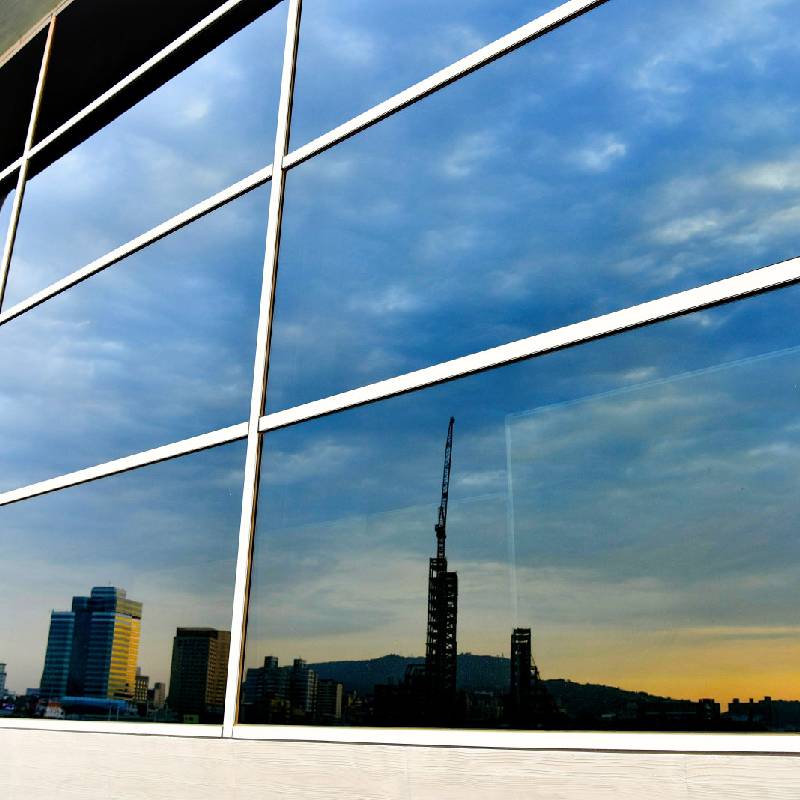Reflections Through Tinted Glass Sheets
In the realm of architecture and design, tinted glass sheets have transcended their initial functional purpose to become a statement of modern aesthetics. These panes, once merely a means to regulate light and provide privacy, now dance with the sun's rays, casting a subtle yet transformative spell on interior spaces.
Tinted glass sheets are not just barriers against the outside world; they are artists' canvases where the palette is hues of sapphire, emerald, and garnet. With every change in the day's mood or the season's shift, these glasses unveil a new masterpiece. The sunlight, diffused and refracted by the tint, paints walls with colors unknown to the visible spectrum, creating an ever-changing gallery within the confines of a room.
This subtle manipulation of light affects not only the visual experience but also the emotional ambiance of a space. A cooler tint might bring a sense of calm and serenity to a bustling office, while a warmer hue can imbue a living room with coziness and warmth, even on the grayest of days. It's this interplay of light and color that makes tinted glass sheets more than just a design choice—it's an experiential decision.
The use of tinted glass sheets is not without its considerations. The shade selected must harmonize with the architectural style and the natural lighting of the building's location The shade selected must harmonize with the architectural style and the natural lighting of the building's location

The shade selected must harmonize with the architectural style and the natural lighting of the building's location The shade selected must harmonize with the architectural style and the natural lighting of the building's location
 tinted glass sheets
tinted glass sheets. What works for a southern-facing window might not suit one that faces the north. The depth of the tint can alter the perception of space, making rooms seem more intimate or affecting the clarity of views to the outside world.
Moreover, these tinted surfaces invite us to reconsider our relationship with transparency and opacity. They offer a glimpse into another realm, blurring the boundaries between the interior and the exterior, yet they maintain a veil of mystery, prompting the viewer to question what lies beyond. It is this dual nature that makes them such compelling elements in both practical and philosophical discussions about design.
In conclusion, tinted glass sheets are far more than a mere decorative choice—they are a medium for artistic expression, a tool for environmental control, and a provocateur of spatial philosophy. As we move forward in an era where design increasingly intersects with technology and sustainability, the humble tinted glass sheet may very well be poised for a breakthrough, shedding its understated past for a vibrant and contemplative future in the world of architecture and design.


 The shade selected must harmonize with the architectural style and the natural lighting of the building's location The shade selected must harmonize with the architectural style and the natural lighting of the building's location
The shade selected must harmonize with the architectural style and the natural lighting of the building's location The shade selected must harmonize with the architectural style and the natural lighting of the building's location tinted glass sheets. What works for a southern-facing window might not suit one that faces the north. The depth of the tint can alter the perception of space, making rooms seem more intimate or affecting the clarity of views to the outside world.
Moreover, these tinted surfaces invite us to reconsider our relationship with transparency and opacity. They offer a glimpse into another realm, blurring the boundaries between the interior and the exterior, yet they maintain a veil of mystery, prompting the viewer to question what lies beyond. It is this dual nature that makes them such compelling elements in both practical and philosophical discussions about design.
In conclusion, tinted glass sheets are far more than a mere decorative choice—they are a medium for artistic expression, a tool for environmental control, and a provocateur of spatial philosophy. As we move forward in an era where design increasingly intersects with technology and sustainability, the humble tinted glass sheet may very well be poised for a breakthrough, shedding its understated past for a vibrant and contemplative future in the world of architecture and design.
tinted glass sheets. What works for a southern-facing window might not suit one that faces the north. The depth of the tint can alter the perception of space, making rooms seem more intimate or affecting the clarity of views to the outside world.
Moreover, these tinted surfaces invite us to reconsider our relationship with transparency and opacity. They offer a glimpse into another realm, blurring the boundaries between the interior and the exterior, yet they maintain a veil of mystery, prompting the viewer to question what lies beyond. It is this dual nature that makes them such compelling elements in both practical and philosophical discussions about design.
In conclusion, tinted glass sheets are far more than a mere decorative choice—they are a medium for artistic expression, a tool for environmental control, and a provocateur of spatial philosophy. As we move forward in an era where design increasingly intersects with technology and sustainability, the humble tinted glass sheet may very well be poised for a breakthrough, shedding its understated past for a vibrant and contemplative future in the world of architecture and design.